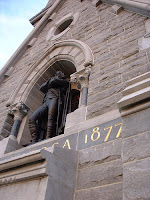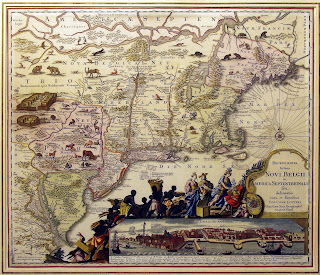 The Town of Saratoga and Villages of Schuylerville and Victory are planning an exciting “historical week” celebration starting August 1 and ending August 9 as part of the “Explore! Saratoga County” efforts. Historical Week is an over 100-year tradition which commemorates the rich history of the villages of Schuylerville, Victory and the Town of Saratoga.
The Town of Saratoga and Villages of Schuylerville and Victory are planning an exciting “historical week” celebration starting August 1 and ending August 9 as part of the “Explore! Saratoga County” efforts. Historical Week is an over 100-year tradition which commemorates the rich history of the villages of Schuylerville, Victory and the Town of Saratoga.
“We plan a whole week of events to commemorate America’s Most Historic Village,” Schuylerville Village Historian Kristina Saddlemire said, “We have a great partnership made up of the various levels of government including the Town of Saratoga, Villages of Schuylerville and Victory, Saratoga County, Hudson River Valley Greenway, Hudson-Fulton-Champlain Quadricentennial Commission, Saratoga National Historical Park and non-governmental partners including the Turning Point Parade, Old Saratoga Historical Association, Hudson Crossing Park, Schuylerville Area Chamber of Commerce, Mohawk Hudson Cycling Club, and the Schuylerville Public Library.”
The schedule includes:
Quadricentennial Bike Tour of the Hudson
Saturday, August 1, (10 am)
As part of the celebration of the 400th anniversary of Henry Hudson’s sail, join us for a casually-paced 30-mile tour of the historic roads from the Village of Victory to Stillwater and back, with occasional stops at points of historical significance. There will be lots of fine views of the river. The terrain is mostly rolling with two steep hills (one up, one down). Park along Cemetery Avenue just south of the Saratoga Monument, near the intersection of Burgoyne Road. Bike Helmets Are Required! For information, contact 587-7801 or [email protected]. Gather along Cemetery Avenue just south of the Saratoga Monument, near the intersection of Burgoyne Road, Victory Mills
TURNING POINT PARADE FESTIVAL – “Echoes on the Hudson”
Saturday, August 1, (Noon)
Kid’s rides, food, bonfire, and block dance on Saturday. Fort Hardy Park.
TURNING POINT PARADE – “Echoes on the Hudson”
Sunday, August 2 (1 – 2:30 pm)
Over 100 separate units including marching bands/musical units, fire and rescue, law enforcement, re-enactors and military units past and present. It is a parade with a “small town flavor”. Broad Street.
TURNING POINT PARADE FESTIVAL – “Echoes on the Hudson”
Sunday, August 2, (3 pm)
Kid’s rides, food, music including the Open Bar Band and fireworks (9:30pm) on Sunday. Fort Hardy Park. For more information http://www.turningpointparade.com/
For more information on Turning Point events see http://www.turningpointparade.com/
GREAT CHAMPLAIN-HUDSON SOJOURN
Monday, August 3 (4pm – 8pm)
The Great Champlain-Hudson Sojourn will be stopping at Fort Hardy Park as part of twenty-six day, 325 mile kayaking and camping trip from the Canadian border to Manhattan along beautiful Lakes Champlain and George, the Champlain Canal and the Hudson River. A group of Thru-Paddlers will be camping out at Fort Hardy and visiting heritage and cultural sites in the community. Please join us at 10am to welcome this group of paddlers to Fort Hardy Park. There will be a local kayaking outfitter providing free kayaking lessons, exhibitors, and plenty of activities for the kids! A community dinner, sponsored by the Saratoga County Board of Supervisors will held at Fort Hardy at 6pm.
RESEARCHING YOUR SCHUYLERVILLE AREA ANCESTORS
Tuesday, August 4 (10 am)
Get help with research strategy for finding Schuylerville ancestors from Deputy Town Historian and Genealogist Patricia Peck. Schuylerville Public Library.
MAKING A CARDBOARD BOAT
Tuesday, August 4, 2009 (7 pm)
This is an opportunity to make a boat to compete in the Hudson Crossing cardboard boat race on Saturday, August 8. Bring cardboard and enjoy the creative process. Schuylerville Public Library, Ferry Street, Schuylerville
WALKING TOUR of VICTORY
Wednesday, August 5 (7 pm)
Join Sean Kelleher, Village of Victory Historian, for a walking tour of Victory. Meet at the Village Hall/Community Center
STORY HOUR – 400th anniversary themed
Thursday, August 6 (10 am)
Pre-school age children are welcome (with an adult) to attend the Schuylerville Public Library’s Story Hour for a story and activity with Town Historian, Sean Kelleher. Schuylerville Public Library. 23 Pine Street, Victory Mills
VILLAGE OF SCHUYLERVILLE WALKING TOUR
Friday, August 7 (7 pm)
Join Village of Schuylerville Historian, Kristina Saddlemire, for a walking tour of the North Broad Street Cemetery. Learn about former Schuylerville residents. Meet on Broad Street in front of the cemetery.
HUDSON CROSSING CARDBOARD BOAT RACE
Saturday, August 8 (starts at 8 am races at 1 pm)
Construct a “human-powered” boat made of corrugated cardboard (or 100% recyclable materials) or watch the races and enjoy the day on the Hudson River in Schuylerville. Registration and boat construction begin at the gazebo at 8:00 am. Racing begins at 1:00 pm. For more information contact (518) 859-1462 or www.hudsoncrossingpark.org Fort Hardy Park Beach.
SPIN TIL YOU DYE
Saturday, August 8 (11 am – 3 pm)
Rock Day Spinners demonstrate fiber spinning and natural dyeing over an open fire. Schuyler House, Route 4, Schuylerville.
18th CENTURY DAY
Sunday, August 9 (12 – 5 pm)
Step back in time at the historic Schuyler House! The grounds abound with 18th century activities, including puppet shows, music, oxen cart rides, basket weaving, chair caning, tinsmithing, and more. Schuyler House, Route 4, Schuylerville. For more information, call (518) 664-9821 ext. 224 or www.nps.gov/sara.
Historical Week is sponsored by the Town of Saratoga, Village of Schuylerville, Village of Victory, Schuylerville Public Library, Turning Point Parade Committee, Schuylerville Visitors Center, Schuylerville Area Chamber of Commerce, Old Saratoga Historical Association, Hudson Crossing – A Bi-County Educational Park, Hudson River Valley Greenway, Hudson-Fulton-Champlain Quadricentennial Commission, Mohawk Hudson Cycling Club, Saratoga County, and the Saratoga National Historical Park. The purpose of Historical Week is to commemorate the important role that the Town of Saratoga and Villages of Schuylerville and Victory played in regional, national and international history. For more information call 695-4159 or visit http://www.villageofschuylerville.org/
Photo: The Saratoga Monument in Victory, NY.
 New Netherland – the Dutch province that stretched from today’s New York State to parts of Delaware, New Jersey, Pennsylvania, and Connecticut – existed for 55 years and its legacy lives on. Just two years after the founding of the first permanent English colony at Jamestown in 1607, and eleven years before the Pilgrims landed at Plymouth Rock, the Dutch were in New Netherland. And, although their hold on that part of North America was tenuous and brief, the influence of the Dutch was both impressive and long term.
New Netherland – the Dutch province that stretched from today’s New York State to parts of Delaware, New Jersey, Pennsylvania, and Connecticut – existed for 55 years and its legacy lives on. Just two years after the founding of the first permanent English colony at Jamestown in 1607, and eleven years before the Pilgrims landed at Plymouth Rock, the Dutch were in New Netherland. And, although their hold on that part of North America was tenuous and brief, the influence of the Dutch was both impressive and long term.






